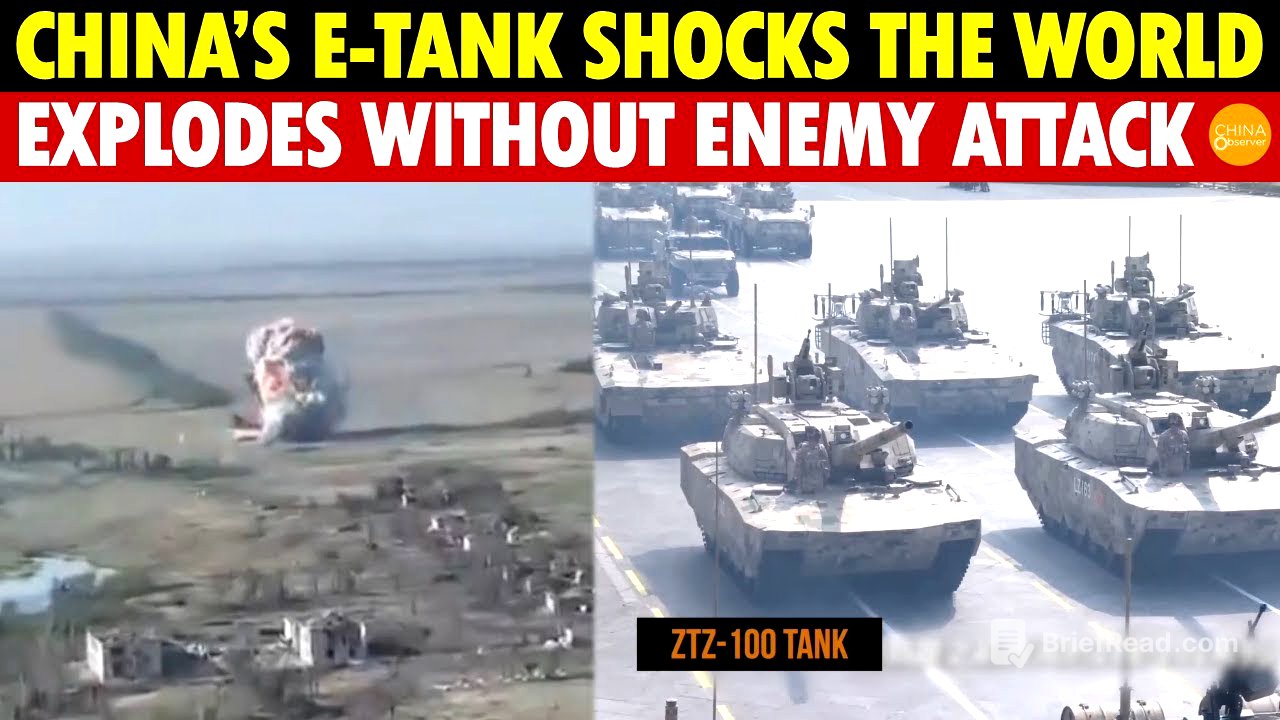TLDR;
The video analyses China's new generation ZTZ 100 main battle tank, questioning its design choices and highlighting potential flaws. It argues that the tank's features, such as the 105mm gun, hybrid power system, and glass cockpit, are driven more by economic and political factors than by genuine military innovation. The analysis suggests that the ZTZ 100 is a product of China's need to utilise surplus industrial capacity and maintain political narratives, potentially compromising its combat effectiveness.
- The ZTZ 100's design choices, such as the 105mm gun and hybrid system, are questioned for their military effectiveness.
- The tank's features are potentially driven by economic and political factors, including the need to utilise surplus industrial capacity.
- The design compromises may impact the tank's performance and the safety of its crew in real combat scenarios.
Introduction to the ZTZ 100 [0:00]
The ZTZ 100, China's new generation main battle tank, was unveiled on September 3rd, 2025. Official promotions emphasise its 1500 horsepower hybrid power system, a range exceeding 600 km, and a top speed of 85 km/h. However, military technology and geopolitics experts have raised critical questions about its design choices. These questions challenge the claims of it being a cutting-edge vehicle.
The 105mm Gun: A Technological Setback? [4:20]
The decision to equip the ZTZ 100 with a 105mm cannon, instead of the world standard 125mm gun, is a key point of contention. While other military powers are increasing the calibre of their tank guns to ensure one-shot kills against advanced armour, China has opted for a smaller calibre. The official explanation that the 105mm gun is sufficient with its special alloy armour-piercing rounds is viewed as unconvincing, given the global trend towards larger calibres. The choice of the 105mm gun is likely due to China's struggles with the high-performance automatic loaders and precision turret drive systems required for larger calibre guns, reflecting a weakness in precision manufacturing. The ZTZ 100's design is a compromise, prioritising low R&D risk, low manufacturing cost, and fast production speed over firepower.
Battery Revolution or Trap? [1:06]
The ZTZ 100's hybrid system, while touted as a revolutionary advancement due to China's battery technology, raises concerns about battlefield performance. Lithium batteries are vulnerable to extreme temperatures and high-impact shocks, posing a risk of fire or explosion. The complex hybrid system increases logistical maintenance challenges, as failures in the battery pack, electronic control system, or motor could lead to irreparable battle damage. The improved range offered by the hybrid system is considered negligible, given the short lifespan of tanks in combat. The hybrid system is not a military-driven innovation but a solution to utilise China's surplus battery production capacity, a result of failed industrial policy.
Glass Cockpit: A Deadly Temptation [8:38]
The ZTZ 100's integrated glass cockpit, resembling a Tesla's interior, is criticised as a dangerous step backward. Unlike traditional tanks with physical buttons and levers for redundancy, the glass cockpit's touchscreens are vulnerable to shrapnel, short circuits, and software bugs, potentially turning the tank into a "deaf and blind steel coffin." The use of civilian-grade electronic components, prioritising cost over durability, further compromises the cockpit's reliability in harsh battlefield conditions. The glass cockpit is another compromise, leveraging China's consumer electronics industry to avoid addressing technical shortcomings.
A Three-Man Cage: The Chassis Curse [11:42]
The ZTZ 100's three-man crew, enabled by the unmanned turret, is cramped within the narrow vehicle interior, revealing a structural flaw in the design. The blind worship of the universal chassis concept, using the same chassis for different vehicle types, has resulted in a chassis that is not optimised for the tank's needs. The side-by-side layout of the crew compartment increases the vehicle's width and hinders crew collaboration and escape. The design prioritises ease of production and maintenance over soldier combat efficiency and survival chances.
The Hidden Truth: Politics and Economics [14:30]
The ZTZ 100's design is driven by the need to utilise China's surplus production capacity in industries like EVs and lithium batteries, created through state-driven initiatives and subsidies. The tank serves as a "capacity digester," providing demand for batteries, steel, electronics, and other components from state-owned enterprises. Systemic problems within China's industrial-military complex, where cost control and political stability take precedence over weapon performance, also influence the design. The ZTZ 100 is a compromise shaped by politics, economics, and technology, serving domestic and foreign policy narratives. While the tank's symbolic value is high, its actual combat effectiveness remains untested and potentially compromised by these factors.









